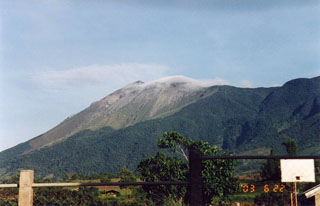Report on Kanlaon (Philippines) — 26 August-1 September 2009
Smithsonian Institution / US Geological Survey
Weekly Volcanic Activity Report, 26 August-1 September 2009
Managing Editor: Sally Sennert.
Please cite this report as:
Global Volcanism Program, 2009. Report on Kanlaon (Philippines) (Sennert, S, ed.). Weekly Volcanic Activity Report, 26 August-1 September 2009. Smithsonian Institution and US Geological Survey.
Kanlaon
Philippines
10.4096°N, 123.13°E; summit elev. 2422 m
All times are local (unless otherwise noted)
PHIVOLCS reported that during 23 August-1 September the seismic network for Kanlaon detected a significant rise in the number of earthquakes. A few of the earthquakes were felt as far away as Bago City, 30 km NW. The epicenters clustered on the NW flank.
Geological Summary. Kanlaon volcano (also spelled Canlaon) forms the highest point on the Philippine island of Negros. The massive andesitic stratovolcano is covered with fissure-controlled pyroclastic cones and craters, many of which are filled by lakes. The largest debris avalanche known in the Philippines traveled 33 km SW from Kanlaon. The summit contains a 2-km-wide, elongated northern caldera with a crater lake and a smaller but higher active vent, Lugud crater, to the south. Eruptions recorded since 1866 have typically consisted of phreatic explosions of small-to-moderate size that produce minor local ashfall.
Source: Philippine Institute of Volcanology and Seismology (PHIVOLCS)

